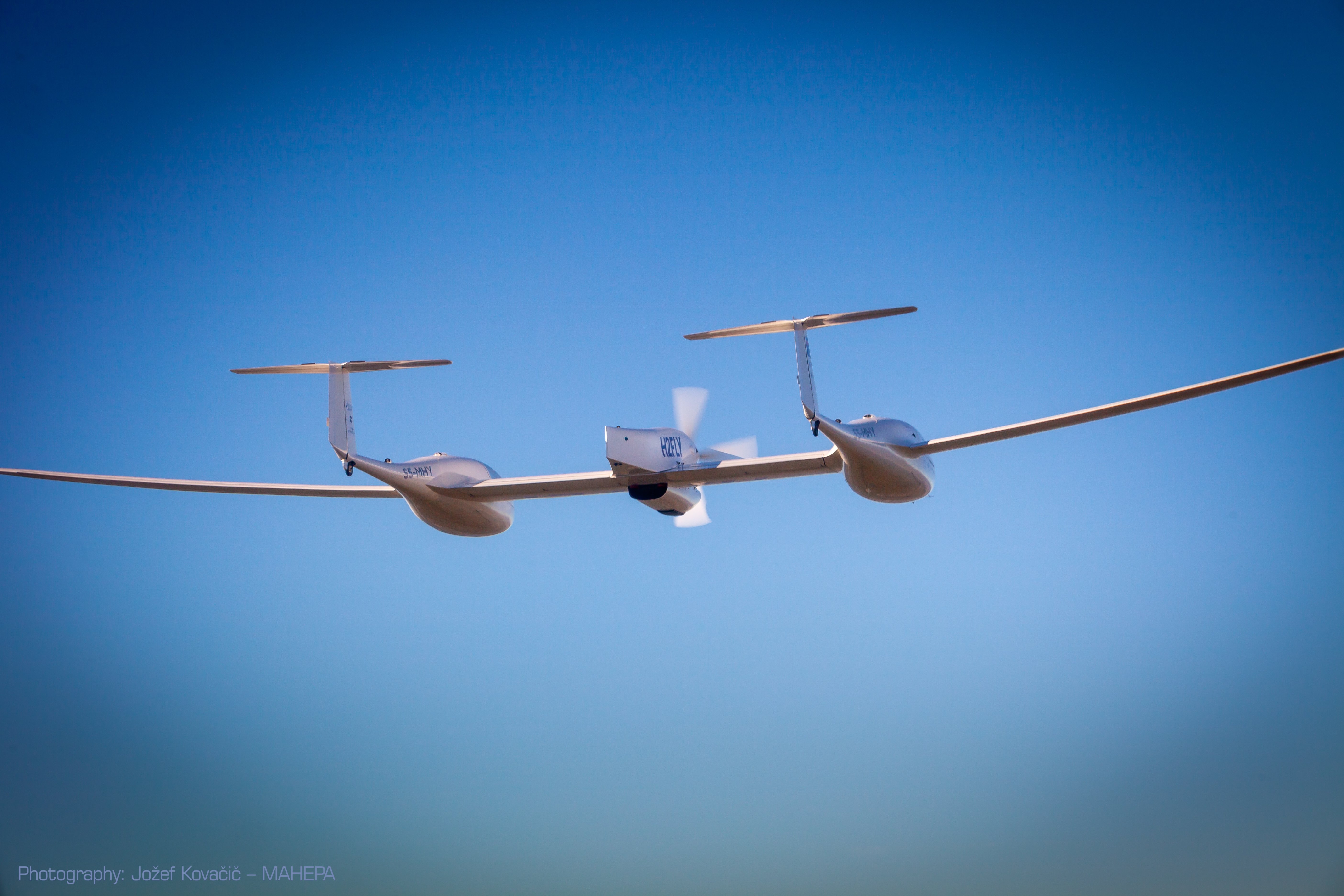Click Here to View This Page on Production Frontend
Click Here to Export Node Content
Click Here to View Printer-Friendly Version (Raw Backend)
Note: front-end display has links to styled print versions.
Content Node ID: 418824
Europe’s Modular Approach to Hybrid Electric Propulsion Architecture (MAHEPA) is preparing to fly a new hybrid version of Pipistrel’s Panthera light aircraft. This follows the successful test flights conducted in November with the consortium’s hydrogen-powered hybrid-electric Hy-4 technology demonstrator.
Slovenia-based Pipistrel’s Vertical Solutions division is a member of the MAHEPA consortium that also includes Compact Dynamics, German aerospace research agency DLR, hydrogen storage specialist H2Fly, Italy’s Politecnico di Milano, the TU Delft university in the Netherlands, the University of Maribor, and the University of Ulm in Germany. The first Hy4 flight was made on November 6 from Maribor Airport in Slovenia and the aircraft spent the next two weeks flying sorties of up to two hours duration.
The Hy4 is a highly original design consisting of two separate fuselages, each housing a two-seat cockpit, on either side of a long wing, each with its own tail section. A single four-bladed propeller is positioned between them with the hybrid powertrain.
The Hy4 trials are intended to evaluate the architecture of the powertrain developed by the MAHEPA partners. The program started in 2017 and has received European Union funding under initiatives to make aviation more environmentally sustainable.
Pipistrel’s Panthera is a far more conventional four-seat light aircraft that the company developed to be powered by either electrical power, hydrogen, or petrol, as well as being adaptable for hybrid mode. The initial variant of the single-engine model runs on Mogas and offers a range of up to 1,150 miles and a 230 mph cruise speed.
“For Pipistrel, this [the MEHAPA project] means gaining the knowledge and experience needed for our next development project, a 19-seat hydrogen fuel cell-powered passenger plane that will be able to fly almost silently over a distance of up to 1,000 km [625 miles] in two hours without any emissions,” a company spokeswoman told FutureFlight. “We are confident the prototype will fly before the end of the decade.”
The company indicated that the first flight of the earlier hybrid hydrogen-electric version of the Panthera will happen “very soon.” Privately-owned Pipistrel was established in 1989, started developing electric aircraft around 2000, and started mass-producing them in 2007. Earlier this year, it was awarded a type certificate for its new two-seat Velis Electro two-seater from the European Union Aviation Safety Agency.
